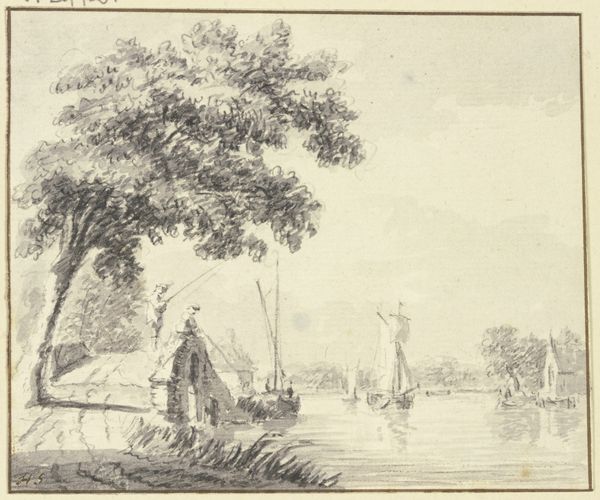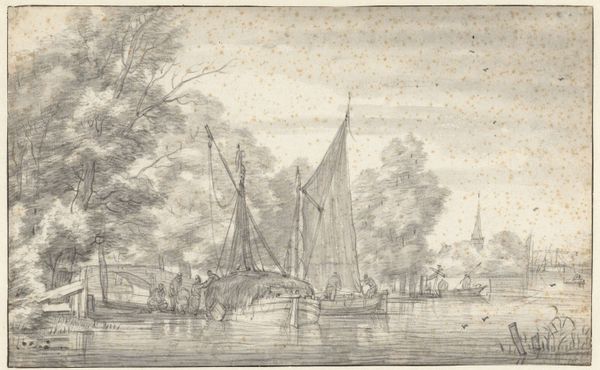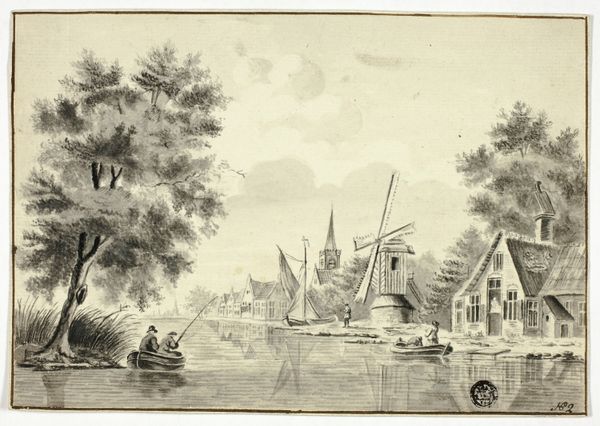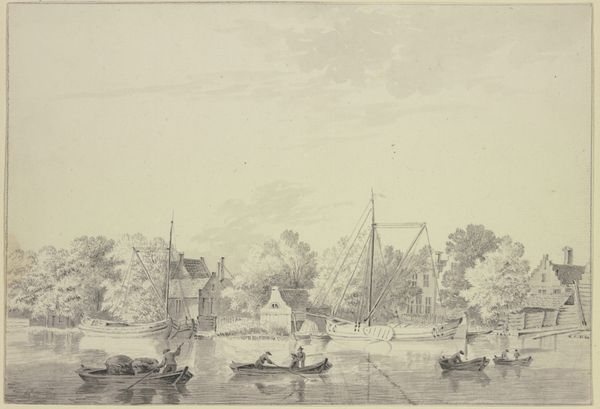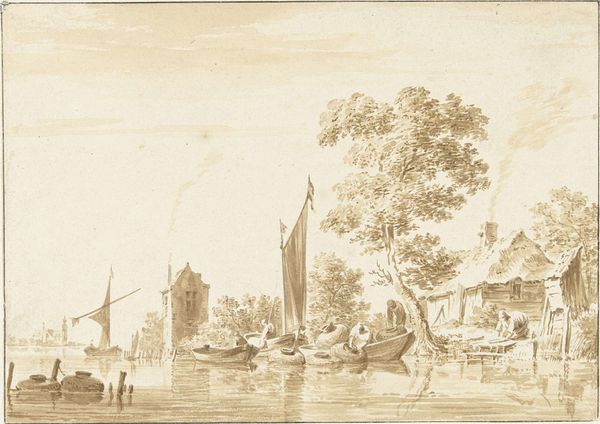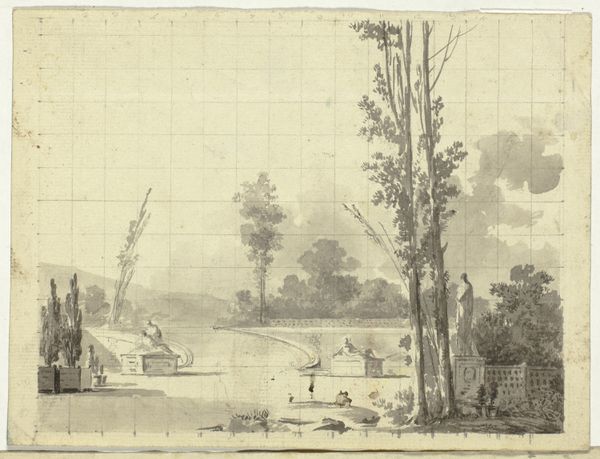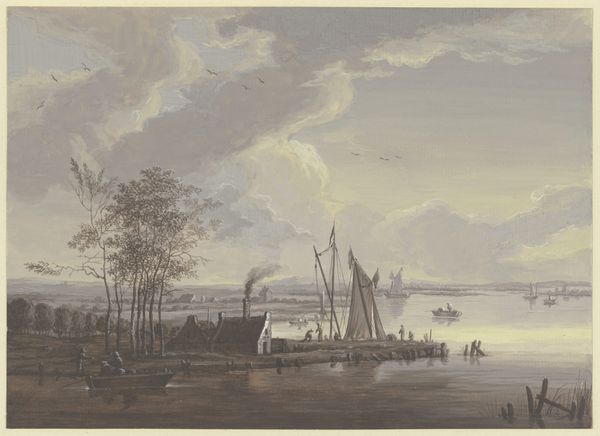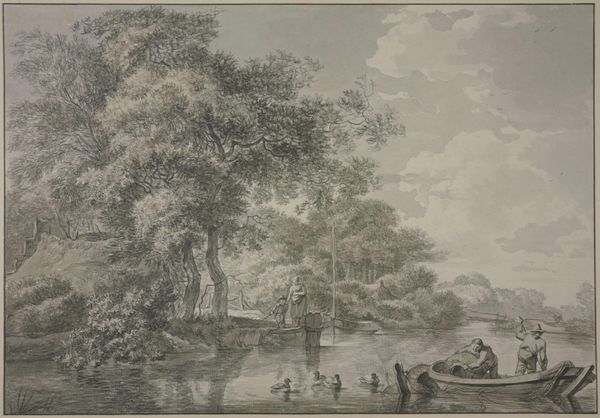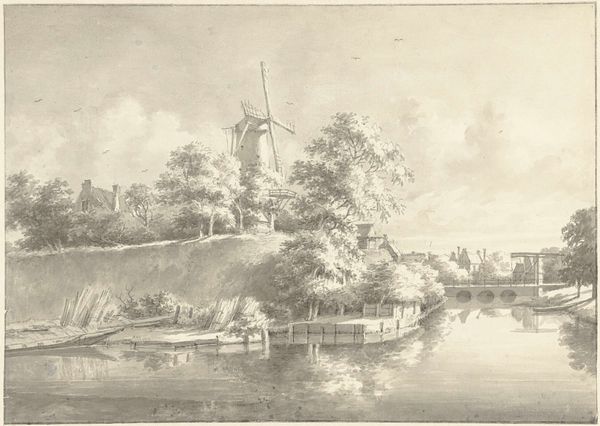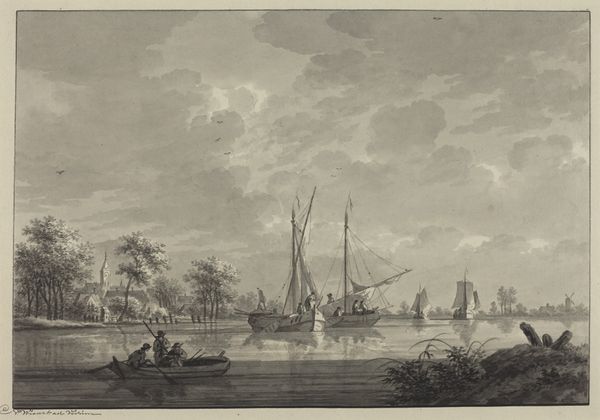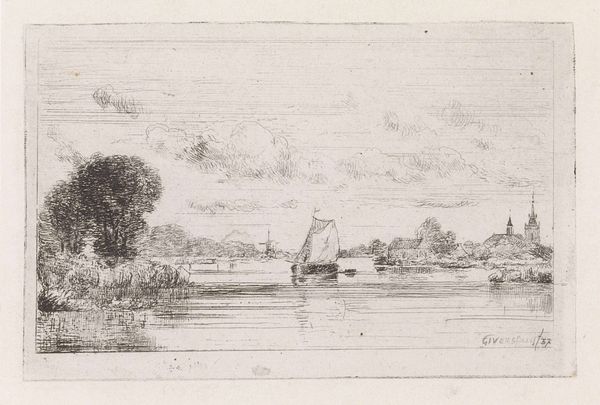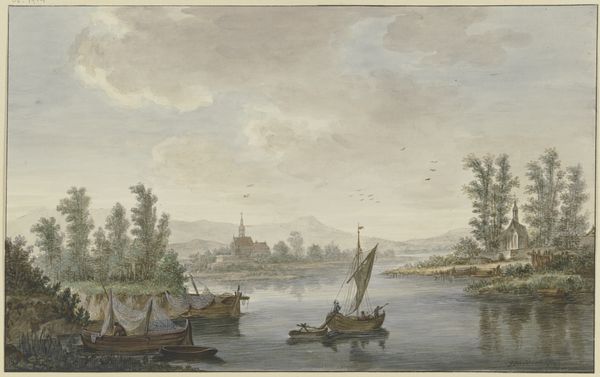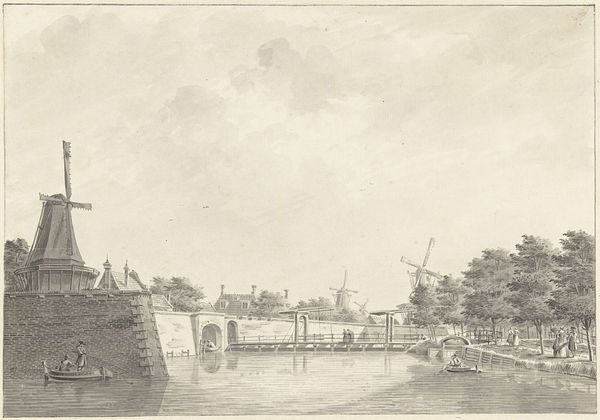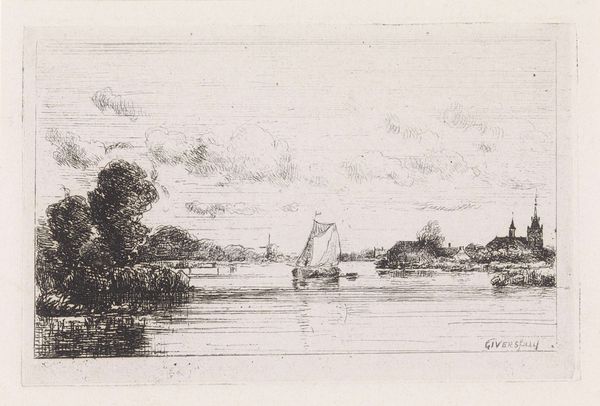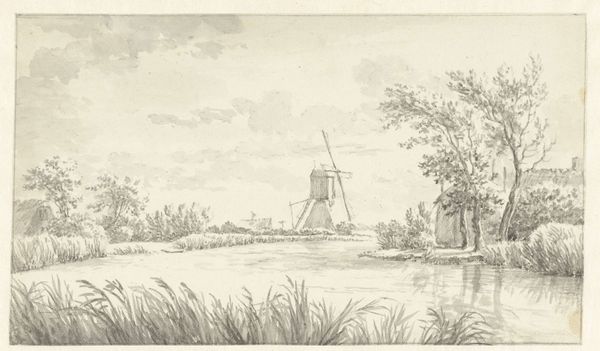
painting, oil-paint, wood
#
baroque
#
dutch-golden-age
#
painting
#
countryside
#
oil-paint
#
landscape
#
wood
#
charcoal
#
realism
Dimensions: 40.5 cm (height) x 72 cm (width) (Netto)
Curator: This is Pieter de Neyn's "Dutch River Scene," created in 1636. The medium is oil on wood, and it's a fine example of Dutch Golden Age landscape painting, now residing here at the SMK. Editor: My first impression is a sense of calm and a kind of quiet spaciousness. The tones are muted, almost monochromatic, but the composition draws the eye into the distance. Curator: Indeed, the Dutch Golden Age landscapes like this one were often commissioned by the burgeoning middle class. This wasn’t art for the church or nobility, but for private homes. They reflect the values of the Dutch Republic, its relationship to the land and water, and a burgeoning sense of national identity. Editor: And that's interesting, considering the painstaking detail in depicting ordinary life along the river, the figures in boats, and the houses on the shore. It's almost a celebration of the everyday, and it really underscores the deep ties the Dutch had, and still have, to the waterways. Who exactly did he hope to reach through the piece? Curator: De Neyn was likely aiming for those rising merchant families eager to display their wealth and social standing. Landscapes, particularly those depicting scenes of local life, were seen as both aesthetically pleasing and subtly patriotic. Editor: So, there’s a layer of nation-building happening here as well as artistry. How would an increasingly wealthy middle class engage with depictions of agrarian life that perhaps no longer defined their daily reality? Perhaps this idyllic representation obscured class divides in some way? Curator: Possibly, but it's more likely that this artwork was appealing for its celebration of the Dutch landscape and its connection to Dutch prosperity through trade and water management. You could almost see the reflection of these economic achievements in the still water. These patrons didn’t want overt political statements, but rather an affirmation of their place in a stable, thriving society. Editor: It definitely makes you consider whose perspective gets highlighted—whose lives get painted into history. Even something as serene as this Dutch River Scene can speak volumes about power, representation, and the choices an artist makes. It encourages you to think of what's *not* pictured too. Curator: Exactly. By examining what's *in* the picture and the context it was created, we can deepen our understanding of Dutch society during the Golden Age. Editor: It goes to show how much art can reveal, and conceal. It certainly invites us to look beyond the tranquil surface and ponder the forces that shaped not just the artwork, but the society around it.
Comments
No comments
Be the first to comment and join the conversation on the ultimate creative platform.
